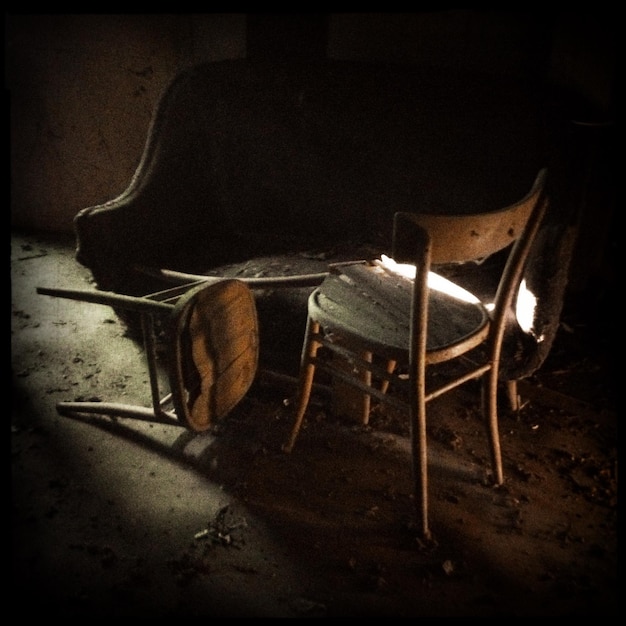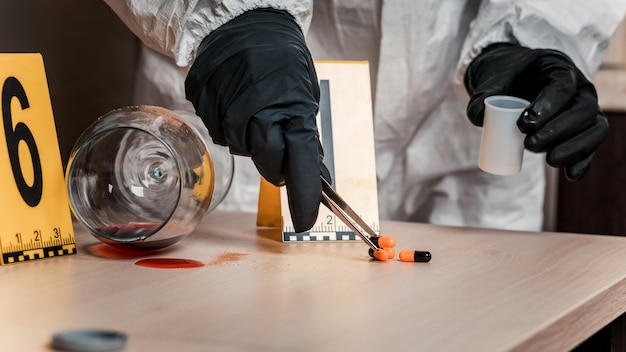Spontaneous Human Combustion: Fact or Fiction? Examining the Unexplained Phenomenon in 2025

Spontaneous Human Combustion (SHC) remains a perplexing phenomenon, with reported cases throughout history suggesting a human body can ignite internally; however, scientific explanations often point to external ignition sources and the “wick effect” as more plausible causes.
Is Spontaneous Human Combustion: Fact or Fiction? Examining the Unexplained Phenomenon in 2025 a real phenomenon or a macabre myth? Join us as we delve into the eerie stories, scientific explanations, and persistent mysteries surrounding this bizarre concept.
What is Spontaneous Human Combustion?
Spontaneous Human Combustion (SHC) is the alleged phenomenon where a human body ignites and burns seemingly from within, without an apparent external source of ignition. While it sounds like something out of a science fiction novel, there have been numerous reported cases throughout history that have fueled the mystery surrounding SHC.
But is there any truth to the claims of SHC? Or are these events simply the result of more prosaic explanations?
Historical Accounts of SHC
Reports of SHC date back centuries, with one of the earliest accounts appearing in literature in 1673. Over time, numerous cases have been documented, often involving individuals found almost entirely incinerated, with their surroundings largely untouched. Here are some points to consider:
- Many cases describe the victims as elderly, infirm, or heavy smokers.
- A peculiar detail is the “wick effect,” where clothing acts as a wick, drawing melted body fat and sustaining the fire.
- Skeptics argue that external sources, like cigarettes or candles, are usually present but overlooked.

The concept has captured the imagination of writers and filmmakers, often appearing in popular culture as a dramatic and inexplicable event.
In conclusion, Spontaneous Human Combustion is recognized as a situation where a human body allegedly burns from within to ash without the help of any external source of fire. Throughout history, there have been several reports of this, making it a mysterious topic.
The Science Behind the Claims
While the idea of a body bursting into flames spontaneously is intriguing, scientists have sought more rational explanations for reported SHC cases. The most widely accepted theory is the “wick effect,” which provides a plausible scenario for how a body might be reduced to ashes.
Let’s explore the science behind SHC and its counterarguments.
The Wick Effect
The wick effect proposes that a small external flame, such as a dropped cigarette, ignites a person’s clothing. The clothing then acts as a wick, slowly melting body fat, which fuels the fire over several hours. This process can lead to the near-complete incineration of the body while leaving surrounding objects relatively unscathed.
The key elements of the wick effect are:
- A source of ignition, usually a small flame.
- A wick-like material, such as clothing.
- A source of fuel, typically body fat.
Skeptical Views and Scientific Explanations
Many scientists and skeptics argue that there is no actual evidence of spontaneous combustion. Instead, they point to external factors and circumstances that could explain these incidents more logically. Factors to consider include:
- Most victims are found near potential ignition sources, like fireplaces or cigarettes.
- The elderly or infirm may be unable to react or escape a fire.
- Alcohol consumption can impair judgment and mobility, increasing the risk.
The scientific community largely dismisses the notion of SHC, instead highlighting the importance of thorough forensic investigation to uncover the true causes of these tragic events.
In summary, while SHC is often portrayed as a mysterious and unexplained event, scientific explanations like the wick effect offer more plausible causes for how a body might be reduced to ashes in specific circumstances.

Notable Cases and Their Explanations
Throughout the years, numerous cases have been attributed to spontaneous human combustion. Examining these alleged incidents closely, and the explanations offered, can provide valuable insights into the phenomenon. Let’s explore some famous cases and see what conclusions were drawn.
It’s worth noting that in many of these cases, detailed examination and analysis have revealed more conventional explanations.
The Case of Mary Reeser
One of the best-known alleged instances of SHC is that of Mary Reeser in 1951. Her body was found largely cremated in her apartment, with only a portion of her left foot and some vertebrae remaining. The room itself showed little fire damage.
Investigators proposed that Reeser, a known smoker, may have fallen asleep while smoking a cigarette, which ignited her clothing. Her body fat then acted as fuel in the wick effect, leading to her incineration. Other points of interest include:
- Reeser was taking sleeping pills, which could have impaired her awareness.
- Grease on nearby furniture supported the wick effect theory.
- The case received extensive media coverage, fueling public fascination with SHC.
Other Alleged SHC Cases
Several other cases have been attributed to SHC over the years, though many lack definitive evidence to support the theory. Here’s a brief overview of a few:
- Jeannie Saffin (1982): An elderly woman in England was found engulfed in flames in her kitchen. Investigators ruled out SHC, citing an open fire as the source.
- Henry Thomas (1980): A Welsh pensioner was found burned to death in his armchair. Again, the cause was attributed to smoking materials igniting his clothing.
- John Irving Bentley (1966): A retired doctor in Pennsylvania was found with his body almost entirely cremated in his bathroom. Investigators believed a lit pipe likely started the fire.
In conclusion, while the idea of SHC continues to intrigue, careful investigations into reported cases often reveal more mundane—though no less tragic—causes.
Spontaneous Human Combustion in Pop Culture
The bizarre and mysterious nature of Spontaneous Human Combustion has made it a popular trope in literature, film, and television. From dramatic plot points to dark humor, SHC has been used in various creative ways.
Let’s take a look at how SHC has been portrayed in popular culture.
Literature
SHC has appeared in numerous books, both fiction and non-fiction. One of the earliest and most notable literary references is in Charles Dickens’ novel “Bleak House,” where a character named Krook seemingly combusts spontaneously. Authors use SHC to create a mystery, create suspense, or make a statement about human frailty.
Film and Television
The visual medium of film and television has also embraced SHC, often depicting it in dramatic and visually arresting ways. Examples can be found across various genres, from horror to comedy. These portrayals, though often exaggerated, contribute to the public’s fascination with the phenomenon.
Impact on Public Perception
Pop culture’s depiction of SHC has likely shaped public perception, often presenting it as an inexplicable and terrifying event. These portrayals can perpetuate misconceptions and contribute to the mystery surrounding SHC.
To conclude, SHC remains a compelling topic, frequently portrayed in literature, film, and television. While often embellished for dramatic effect, these depictions contribute to the public’s enduring interest in the phenomenon.
Forensic Investigations and SHC
Forensic science plays a crucial role in determining the actual causes of fires, including those initially suspected to be cases of Spontaneous Human Combustion. Detailed investigations can uncover factors often overlooked, providing clarity where mystery once reigned.
Let’s dive into how forensic experts approach these incidents.
Methods Used in Forensic Analysis
When investigating a fire, forensic experts use a range of techniques to gather evidence and determine the cause. This process involves meticulous examination of the scene, analysis of fire patterns, and identification of potential ignition sources.
Key steps in forensic analysis include:
- Scene Examination: Carefully documenting the scene, including photographs, sketches, and notes.
- Fire Pattern Analysis: Analyzing burn patterns to determine the origin and spread of the fire.
- Evidence Collection: Gathering samples of debris, clothing, and other materials for laboratory analysis.
The Role of Forensic Experts
Forensic scientists, fire investigators, and medical examiners work together to piece together the events leading up to a fire. Their expertise helps to distinguish between accidental fires, arson, and those possibly caused by unexplained factors.
Important aspects of their role are:
- Identifying potential ignition sources, such as cigarettes, candles, or electrical faults.
- Determining whether accelerants were used to start or spread the fire.
- Examining the victim’s remains for signs of trauma or pre-existing conditions.
Forensic investigations are key to understanding SHC cases. Experts can uncover factors that may have been overlooked and bring more clarity to the incidents.
As a final point, detailed forensic analysis nearly always reveals a conventional explanation for fires initially suspected of being SHC.
The Future of SHC Research in 2025
As we look ahead to 2025, ongoing scientific advances continue to improve our understanding of fire dynamics and human physiology. While Spontaneous Human Combustion remains largely debunked, further research may shed light on rare and unusual cases.
Let’s explore the potential future direction of SCH research.
Technological Advances
Advances in forensic technology and analytical methods are continually enhancing our ability to investigate fires. These innovations could help unravel even the most perplexing cases previously attributed to SHC. Some technologies include:
- Advanced Imaging: Higher-resolution imaging techniques can reveal subtle details at the scene.
- Chemical Analysis: Improved methods for detecting trace amounts of accelerants or other substances.
- Digital Reconstruction: Virtual reality simulations can help recreate fire events for better understanding.
Research Focus
In 2025, research might focus on:
- Understanding the effects of various medical conditions and medications on flammability.
- Investigating potential environmental factors that could contribute to unusual fire behaviors.
- Improving fire safety education to prevent accidental fires and reduce fatalities.
Concluding this idea, ongoing and novel research may help unravel the unexplained.
| Key Point | Brief Description |
|---|---|
| 🔥 Wick Effect | Small flame ignites clothing, which acts as a wick, melting body fat to sustain the fire. |
| 🔬 Forensic Analysis | Detailed scene and lab analysis determines the actual cause, often revealing overlooked factors. |
| 🎬 Pop Culture | SHC is a popular trope used to create mystery and suspense in literature and film. |
| 🧐 Skepticism | Skeptics argue there’s no evidence of SHC and propose external factors as causes of fire. |
Frequently Asked Questions
▼
SHC is the term used to describe cases where a human body is said to ignite and burn without any apparent external source of ignition.
▼
No, the scientific community generally dismisses the idea of SHC, citing external factors and the wick effect as more likely explanations.
▼
This effect occurs when a small flame ignites clothing, which then acts as a wick, melting body fat and sustaining a fire over several hours.
▼
While numerous cases have been attributed to SHC, careful investigation often reveals more conventional explanations for the fires.
▼
Forensic experts analyze scenes and determine the main cause of fires, often uncovering factors that may have been overlooked in initial assessments.
Conclusion
In conclusion, while Spontaneous Human Combustion remains an intriguing and mysterious concept, scientific explanations and forensic investigations suggest that most cases can be attributed to external ignition sources and the wick effect. As we move forward, continued research and advanced investigative techniques will likely further demystify such incidents, emphasizing the importance of thorough analysis and evidence-based conclusions.